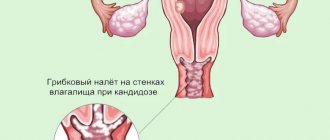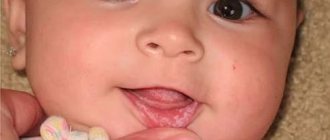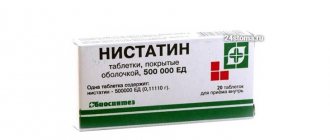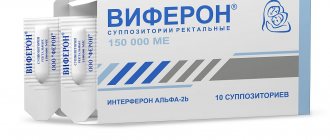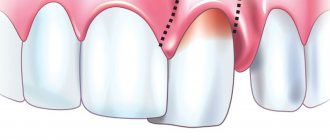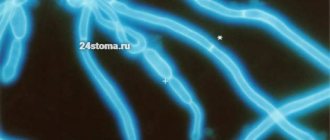What is thrush?
Thrush in the mouth is an inflammation of the mucous membranes caused by fungi of the genus Candida, which can be found anywhere on the human body, including in the mouth and intestines. Thrush in the mouth can happen to people of any age, but it most often occurs in infants, especially those under six months of age.
There is a possibility that the child has already had contact with the fungus. It is transmitted through saliva through hand-to-mouth contact, as well as when a baby passes through the birth canal during vaginal delivery.
If the fungus actively grows in the mouth, a child may develop thrush, which appears as a white coating. Thrush can be uncomfortable or painful, especially during feeding.
Thrush from the baby can spread to the mother's nipples if she is breastfeeding, which can also cause pain and discomfort when feeding.
Causes of thrush in a newborn
There is only one reason that can provoke candidal stomatitis in babies in the first months of life - weak functioning of the immune system as a result of the influence of unfavorable factors.
Conventionally, unfavorable factors can be divided into two groups: internal, associated with the functioning of the body and the functioning of organs, and external.
Internal factors:
- deep prematurity (birth a month or more before the due date);
- low birth weight (less than 2500 g; and less than 1700 g for a child born during a multiple pregnancy);
- congenital defects and pathologies of the formation of internal organs;
- insufficient supply of nutrients and vitamins (occurs when the mother’s diet is poor, if the child is on breastfeeding);
- anemia (low hemoglobin levels as a result of iron deficiency);
- intestinal dysbiosis;
- disturbances in the functioning of the endocrine system;
- rickets;
- history of infectious diseases.
External factors:
- Injury to the oral cavity . Abrasions and cracks in the oral mucosa are an excellent environment for fungi to settle and actively reproduce.
- Antibiotic therapy . It often happens that in the first days of a child’s life it is necessary to give him strong antibiotics (for example, when a child is born with pneumonia and is placed in the intensive care unit immediately after birth). Antibiotics of various groups have a detrimental effect not only on pathogenic bacteria, but also on beneficial microflora, destroying and destroying them. As a result, the newborn develops dysbiosis.
- Refusal of breastfeeding and transfer of the baby to artificial formula . Even the most expensive milk substitutes contain a lot of sugar, which is added to maximize the taste of the product. The acidity of the oral cavity increases and creates a breeding ground for fungal growth.
- Candidiasis in the mother in the last stages of pregnancy . If a woman does not have time to cure thrush before giving birth, the likelihood of infection of the child during passage through the birth canal becomes very high.
- Insufficient hygiene of the newborn. This includes any factors that can provoke the colonization of mucous membranes by harmful organisms: dirty rattles, unboiled nipples and bottles, poor skin care for the baby, etc.
What are the causes of oral thrush in infants?
In most cases, the presence of Candida fungus is not dangerous, since Candida is “good bacteria” under control of the immune system. But in newborns, especially those under six months, the immune system is not yet fully developed, as a result the fungus begins to grow excessively, which leads to thrush in the mouth.
If your child is being treated with antibiotics, this may also increase the risk of thrush. Antibiotics are effective against bacterial infections, but can also kill “good bacteria.” When taking antibiotics, the body's natural defenses are weakened and fungal growth can get out of control.
Symptoms of thrush in infants
If you suspect your baby has thrush, you should visit your pediatrician to confirm the diagnosis and receive treatment recommendations.
Here's how thrush manifests itself in a baby:
- Difficulty feeding.
One of the first signs you may notice is that your baby acts restless during feeding, as if he is in pain or uncomfortable.
- White spots.
The spots resemble curdled milk and can appear on the tongue, lips, gums and roof of the mouth. Try to wipe them gently - if the stains do not go away this way, it may be thrush. If you don't look closely, these spots are not so noticeable, so make it a habit to look into your baby's mouth from time to time.
- Cracks in the corners of the mouth.
Another possible sign of thrush in a child's mouth.
- Mom's symptoms.
If you are breastfeeding and your nipples appear cracked, inflamed, there is a burning sensation, or you feel shooting pain in your nipples or breasts, these may be signs of thrush. Thrush can be transmitted to the mother from the baby during feeding. Later in this article we talk about how to continue breastfeeding if you have thrush.
How to determine if a newborn has candidiasis
This will not be difficult, since the hallmark of thrush in the mouth is the appearance of a white coating that can cover the tongue, gums, inner surface of the cheeks, palate, tonsils, and tonsils.
Thrush spreads to the back of the pharynx in the absence of the necessary therapeutic measures. In very rare cases, the fungus can affect the baby's esophagus and even intestines.
A specific coating, similar to semolina grains (in advanced cases, it can resemble particles of cottage cheese) is the primary sign of thrush.
There are also secondary symptoms that usually appear simultaneously with the main symptom of the disease:
- poor appetite (refusal to breastfeed or bottle);
- crying during feeding;
- sleep disturbance at night;
- general malaise;
- moodiness and irritability;
- redness of the mucous membranes of the oral cavity, wounds and ulcers;
- an increase in temperature to 37-38 degrees (in cases where a bacterial infection is associated with a fungal infection).
The appearance of such symptoms is a reason to call your local pediatrician or consult with a pediatrician online.
How to treat thrush in a baby
If you notice possible symptoms of thrush in yourself or your child, contact your doctor to confirm the diagnosis. The doctor will prescribe the necessary treatment.
Sometimes thrush will go away on its own within a few weeks, but your doctor may also prescribe antifungal medications.
Thrush: treatment with folk remedies
It is not recommended to buy medications to treat thrush in infants without consulting a doctor.
Mothers often resort to folk remedies: they treat spots in the baby’s mouth and their nipples with a soda solution, remove sugar, dairy products, and products containing yeast from their diet.
There is no scientific evidence that these methods are effective, and they should only be used in conjunction with treatment prescribed by your doctor, and not instead of it. Do not use over-the-counter medications or home remedies without your doctor's approval.
If the inflammation does not go away after a few weeks of treatment or goes away and starts again - especially if the baby is over nine months old - talk to your doctor about the possible causes.
Prevention of thrush in newborns
To prevent thrush from returning, as well as for preventive purposes, you should follow simple rules:
- boil bottles, nipples and pacifiers if the child eats formula after each feeding;
- cleanse your baby’s skin daily using hygiene procedures;
- wash your hands before playing or interacting with the child, before feeding;
- pay enough attention to mother’s breast hygiene if the newborn receives mother’s milk as food;
- after feeding, clean the mouth with water or special products sold in pharmacies or children's stores (foam, solutions, etc.);
- strengthen the child’s immunity (long-term breastfeeding, hardening procedures, daily walks, massage, etc.);
- Toys should be washed at least once a week;
- monitor the condition of the baby’s intestines.
Thrush is an unpleasant phenomenon, but it is quite treatable, provided that therapy is started on time and carried out after consulting a doctor. Complications after suffering from candidiasis almost never occur, so preventive measures and close attention to the hygiene and well-being of the baby are quite enough to avoid relapses and re-infection.
To learn how thrush manifests itself in infants and how to get rid of it, watch the video:
This article has been verified by a current qualified physician, Victoria Druzhikina, and can be considered a reliable source of information for site users.
Bibliography
1. https://www.antibiotic.ru/cmac/pdf/6_2_168.pdf
Rate how useful this article was
5 5 people voted, average rating 5
Did you like the article? Save it to your wall so you don’t lose it!
Ways to prevent thrush in infants
By following preventive measures, you can reduce the risk of developing thrush:
- Wash your child's hands regularly, especially if he puts them in his mouth and sucks his fingers. The mother and everyone who comes into contact with the baby should also wash their hands regularly.
- Regularly sterilize pacifiers, teethers, bottle nipples, and anything else that goes into your baby's mouth.
- Wash towels, diapers, and clothes that may have been in contact with fungus at a temperature of at least 50 degrees.
- Sterilize all parts of the breast pump that touch the breast and milk after each use.
- Remove expressed breast milk from the refrigerator immediately before feeding to prevent fungal growth.
- If you suspect that stored expressed milk may be contaminated with fungus, it is better to get rid of it.
- Practice good breast hygiene by changing your disposable breast pads regularly and changing your bra every day.
Preventing the recurrence of thrush
Oral thrush in children can be difficult to get rid of, especially if you are breastfeeding, also because the fungus is so contagious. Thrush can be transmitted between mother and baby through the nipple. You can get the fungus from your household and infect them through bedding, dishes and cutlery.
Therefore, it is extremely important that mother and baby (and other family members if infected) are treated at the same time.
It is also useful to follow all preventive measures while treating the cause of thrush.
Breastfeeding with thrush
If you are breastfeeding, thrush can cause a lot of discomfort for you and your baby.
It is important to start treatment as soon as possible, so go to the doctor as soon as possible to confirm the diagnosis and prescribe treatment. Please note that symptoms may not go away immediately.
Experts recommend not stopping breastfeeding if you have thrush. Here are some ways to relieve discomfort without interfering with your milk supply:
- Try to have shorter feedings, but more often.
- Wash your nipples with water after each feeding and dry them before putting on a bra.
- If cracked nipples make breastfeeding painful for you, try expressing milk and giving it to your baby from a small cup.
- Pain can be relieved with medications. Talk to your doctor about which medications are safe to take while breastfeeding.
Other reasons
Sore breasts and nipples are not always caused by thrush. If you experience sharp pain in your breasts during or after feeding, or severe pain in your nipples, try changing your feeding position or letting your baby latch on again. Sometimes this is enough to relieve the pain.
If cold compresses or air baths increase the pain, the cause of the pain may be contraction of the blood vessels in the nipple area.
Another cause of pain may be mastitis - inflammation of the mammary gland due to stagnation of milk, poor emptying of the mammary gland, as well as a cracked nipple.
These conditions are often confused with thrush, so you should visit a doctor who can pinpoint the cause of your discomfort.
FAQ
- In some babies, thrush causes inflammation in the mouth, as well as pain and discomfort during feeding. But many babies do not experience any discomfort.
- In some cases, thrush may go away on its own, but it is important to see a doctor as he or she may prescribe antifungal treatment.
- If the corners of your baby's mouth are cracked or you notice white spots on the tongue, lips, or inside the mouth, it may be thrush. Another sign of thrush is discomfort or pain during feeding.
- Doctors usually prescribe antifungal medications to treat thrush in children. If thrush appears in the mother or one of the family members, it is important to treat everyone at the same time to avoid transmitting the infection to the baby.
Life with a baby is full of surprises. One minute you are touched by that first toothless smile, and the next minute you look anxiously into the baby’s mouth.
Thrush in infants is a common problem that parents face. Just follow the doctor's recommendations, and everything will gradually pass, and you and your baby will be able to enjoy moments of closeness during feeding again.

